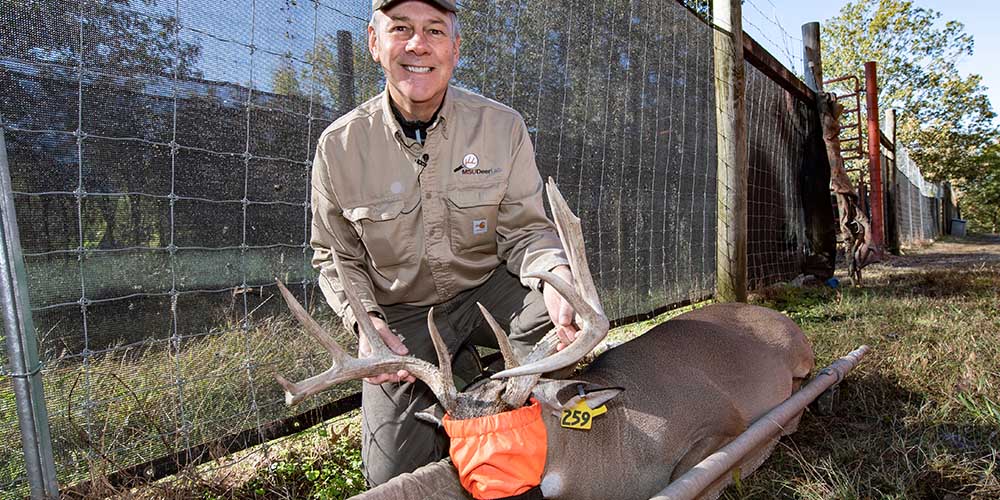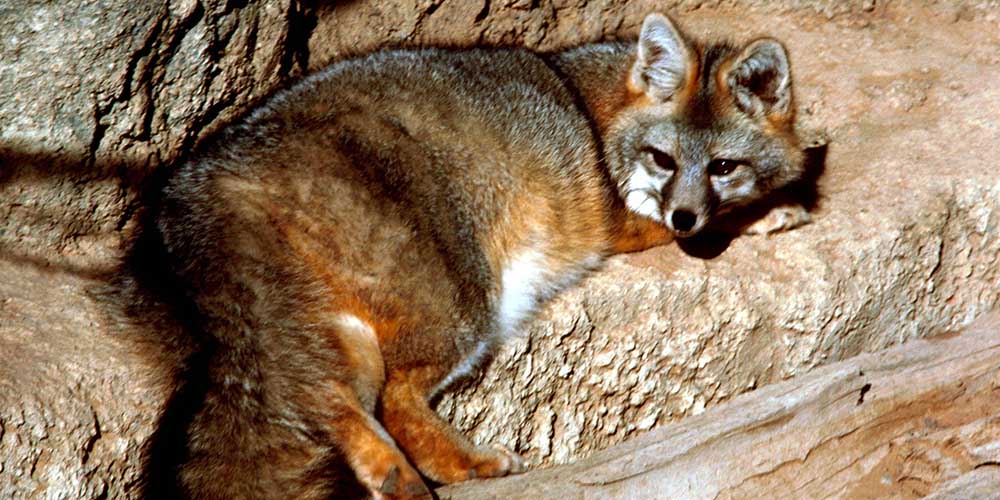Related Stories
Wildlife Stories

No Harm, Plenty of Waterfowl
FWRC researchers are exploring off-season rice production systems as flooded habitats for waterfowl could make the soil healthier and reduce external nitrogen inputs. Dr. Beth Baker, wildlife, fisheries and aquaculture assistant extension professor and Dr. J. Brian Davis, James C. Kennedy Associate Professor, are exploring how the LEISA approach, which means low-external-input sustainable agriculture, can help bring waterfowl to the land in the winter. Instead of rice fields being tilled and left fallow, the rice stubble remains, and the field is flooded.
In addition to the rice fields providing roosting and foraging habitat, their location in the Mississippi Delta is part of the natural migratory path of many waterfowl species such as ducks, geese, and swans. Historic bottomland hardwoods of the Mississippi Delta have mostly been replaced by agricultural crops, including rice, but if rice fields remain flooded in winter, producers ensure that ducks and geese continue their natural migration patterns to this region. The team includes Alexandra Firth, wildlife, fisheries and aquaculture doctoral student; Dr. Ray Iglay, wildlife, fisheries and aquaculture assistant professor and Dr. John Brooks, USDA-ARS research scientist. This research was funded by the Monsanto Foundation; the Forest and Wildlife Research Center; the United States Department of Agriculture Southern Sustainable Agriculture, Research & Education; and the United States Department of Agriculture’s Agricultural Research Services.
2020

Environmental Sentinels
Mississippi State University researchers, led by Dr. Steve Demarais, are pioneering a new method for detecting Chronic Wasting Disease (CWD) in deer before symptoms appear. The team is investigating the use of deer "scrapes"—areas where bucks leave saliva, urine, and paw marks—as early warning signals for CWD. Scrapes could indicate the presence of prions (infectious agents of CWD) even before a deer shows symptoms. The team has found CWD prions in scrapes up to 19 miles away from known infected deer. This method could offer a more cost-effective and timely approach to monitoring CWD, helping wildlife agencies detect the disease in new areas more efficiently.
Research partners include the University of Minnesota and MSU's Veterinary Research and Diagnostic Lab. Positive results from scrape samples would inform hunters to test harvested deer but would not trigger a CWD Management Zone.
2023

Understanding Ecology of Gray Foxes and Asian Bear Population Estimation
Finding better ways to study foxes and bears in the forest helps animals and humans alike, according to one FWRC population ecologist. Dr. Dana Morin, assistant professor of wildlife ecology and FWRC scientist is motivated to discover the best animal population monitoring methods. Morin contributed to two studies considering how to utilize camera traps to monitor population trends and understand drivers of population change amongst different species. She and her collaborators from the U.S. Forest Service, Southern Illinois University Carbondale, and the Illinois Natural History Survey studied how competition may contribute to population declines in gray foxes. Morin also has evaluated combined methods in her current research to discover what density estimation methods are best suited for monitoring Asian bears.
The team found that unmarked estimation methods were unreliable for low density species, the case for most Asian bear populations, but accuracy and precision improved when camera trap data was used in conjunction with additional sampling methods. In addition, the research concluded that detecting population declines in Asian bears or other low-density populations would require sampling at extensive spatial scales, collaborations, and coordination of study designs and sampling protocols. The gray fox research was funded by Illinois Department of Natural Resources, Federal Aid in Wildlife Restoration Project, USDA Forest Service, Pacific Northwest Research Station, and USDA National Institute of Food and Agriculture McIntire Stennis Program. The Asian bear research was supported by USDA National Institute of Food and Agriculture McIntire Stennis Program with additional funding provided by the Research Council of Norway.